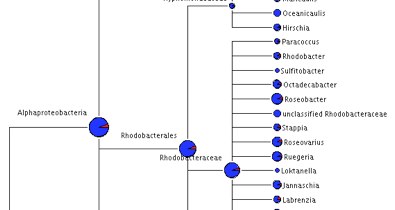by Sonia Timberlake and Eric Alm
soniat at mit.edu

The SHE-RA software turns error-prone short reads into Sanger-quality
composite reads by aligning the overlapping ends of each matepair. Given a
library of appropriately-sized inserts, paired-end reads of each insert
overlap in the middle, and can be aligned to produce a longer, more accurate
composite read, extending the scope of applications for high throughput
shortread sequencing. A single lane of Illumina can be processed to generate
upwards of 10 million ~200bp reads, allowing a deep look at complex
metagenomic samples. The algorithm is generally applicable to any short read
technology generating matepaired reads, and is open source.
SHE-RA was used to process Illumina Genome Analyzer II reads for metagenomic analysis in this paper:
Rodrigue S*, Materna AC*, Timberlake SC, Blackburn MC,
Malmstrom RR, et al. (2010) Unlocking Short Read Sequencing for
Metagenomics. PLoS ONE 5(7): e11840. doi:10.1371/journal.pone.0011840
SHE-RA package was written by Sonia Timberlake, with inspiration from Sebastien
Roderigue, Arne Materna and Eric Alm. Website maintained by Sonia Timberlake
with many thanks to Albert Wang.
Here's a patch to deal with them.
Edit concatReads.pl.
Replace this line (line ~140): check_seqNames($name1,$name2) or die "reads seem mislabeled";
with this new code: map { s/ /:/g }($name1, $name2);
0.) I'm confused. Where do I start?
Check out the readme file, and see
our PlosOne paper, "Unlocking Illumina for Metagenomics," and the
documentation section on this website.
1.) Why do you need the adapter sequences? Aren't they already trimmed from
the files?
If an insert is shorter than your read length, the
sequencing reactions "read" into the adapters. To capture these alignments,
I include the adapter sequences.
2.) You're doing an ungapped alignment. But what about indels in the reads?
On the Illumina platform they are quite rare, so in this first version
of this software I stuck with an ungapped alignment. Practically speaking,
an indel in the putatively overlapping region will give you a poor alignment
score, and a misalignment with low confidence score will be reported.
3.) What's the deal with misalignments?
Finding the best alignment for a short fragment of relative high error-rate
sequence is not trivial, so misalignments are definitely something to think
about! SHE-RA returns the composite read constructed from the best alignment
of ALL sequences (preserving the input order), gives you a confidence score,
and allows you to filter as you like. Your filtering approach should be
based on your data, your downstream applications and your amount of free
time. I provided a little script filterReads.pl as part of the download, and
i think the threshold value 0.5 is a decent starting point to limit your
misalignments, but this will vary with your dataset. I suggest shuffling
your mate pairs and running SHE-RA to get a distribution of confidence
scores for mis-alignments.
4.) What does the program do if the reads don't actually overlap, ie if the
insert length is longer than 2*read_length ?
There's no way to know this, except in a probabilistic sense. The program
outputs the best alignment for each read pair, with a confidence metric.
Sequences from this scenario will largely be reported with the mates
(erroneously) joined with a short (ie 10-14bp) overlap, and with low
alignment confidence, which will allow you to filter them out as you choose.
5.) From the example shell script, it looks the program might need a "base
frequency file" - what is this, and how does it affect the data processing?
This is an option i included for calculating the new quality scores in genomes
with very high GC content. At present, it only effects the quality score, and
not that much. In theory it should improve the approximation of error
probability but I haven't tested whether it does in practice.

 The SHE-RA software turns error-prone short reads into Sanger-quality
composite reads by aligning the overlapping ends of each matepair. Given a
library of appropriately-sized inserts, paired-end reads of each insert
overlap in the middle, and can be aligned to produce a longer, more accurate
composite read, extending the scope of applications for high throughput
shortread sequencing. A single lane of Illumina can be processed to generate
upwards of 10 million ~200bp reads, allowing a deep look at complex
metagenomic samples. The algorithm is generally applicable to any short read
technology generating matepaired reads, and is open source.
The SHE-RA software turns error-prone short reads into Sanger-quality
composite reads by aligning the overlapping ends of each matepair. Given a
library of appropriately-sized inserts, paired-end reads of each insert
overlap in the middle, and can be aligned to produce a longer, more accurate
composite read, extending the scope of applications for high throughput
shortread sequencing. A single lane of Illumina can be processed to generate
upwards of 10 million ~200bp reads, allowing a deep look at complex
metagenomic samples. The algorithm is generally applicable to any short read
technology generating matepaired reads, and is open source.